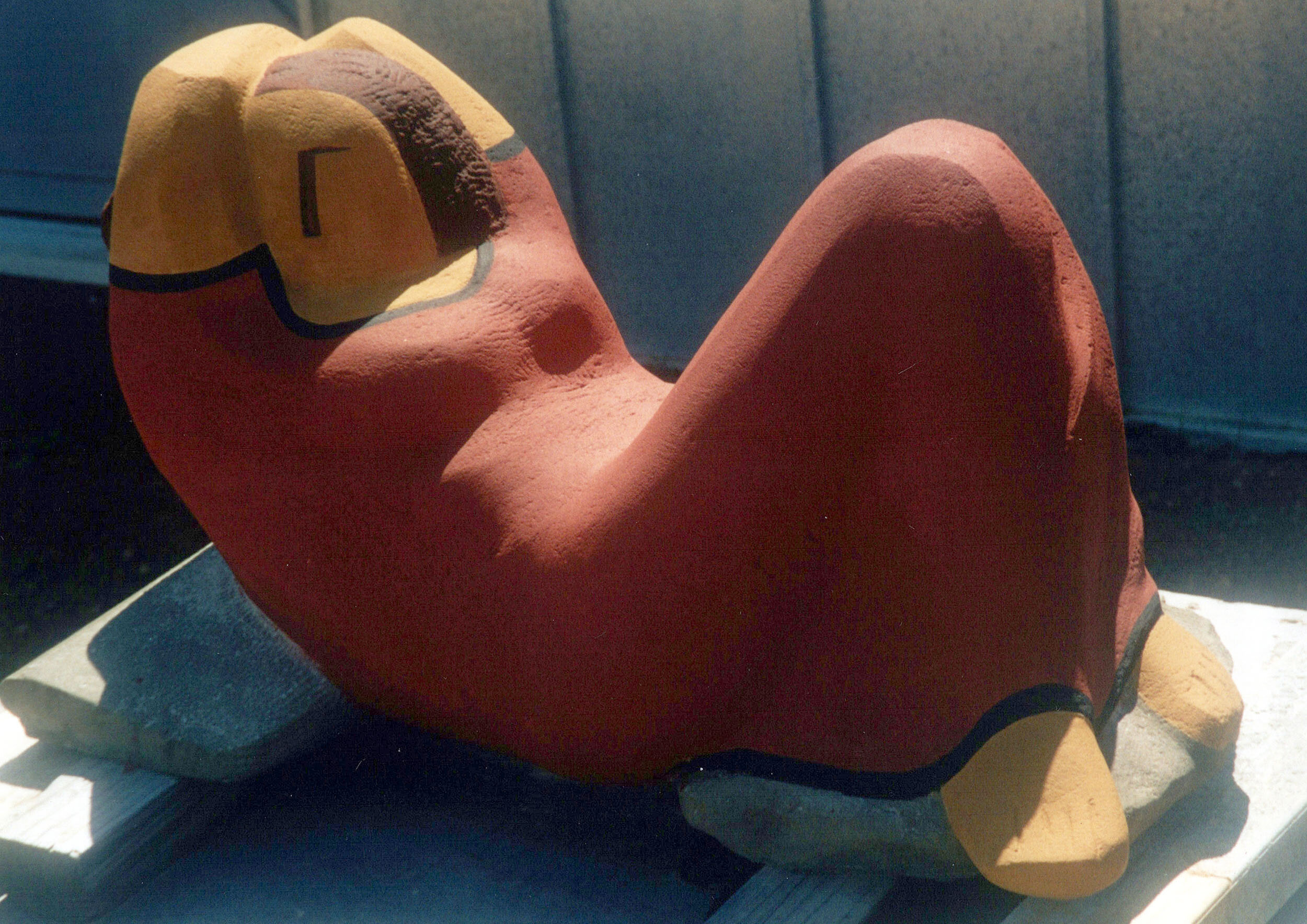
Stone
Stone carving
“In the history of non-Indigenous Australian art there have been only a few exceptional stone or wood carvers….Madigan proved to be the country’s most accomplished carver of figurative works.”
Deborah Edwards, Australian Collection Focus: Rosemary Madigan - Torso 1954 and Torso 1986, Art Gallery of New South Wales
The concept of finding the shape within a block of stone - usually Sandstone or Marble - was natural to Madigan’s artistic expression and understanding of solid form. She was at home with the strenuous physical activity required, and never allowed any assistants to take on any of the blocking out of a piece. She became familiar with the use of pneumatic tools in England in the 50s, while pregnant with her second child. During her years in Adelaide after her return, most of her stone work was in the softer medium of Soapstone. Later, during her years in Sydney, she found a working space at the stonemason’s yard of Kevin Tyrell in Ryde, and completed many large scale works.
On this page: Marble; Sandstone; Quartet; Heads; Painted Stone; Soapstone; Slate



































Marble
Left and centre: Head of John (Jack) Giles; completed and included in the collection of submissions for the NSW Travelling Art Scholarship in 1950.
Sandstone
An early sandstone, completed in London during the Travelling Art Fellowship.
Several Torsos - Sandstone; created in Balmain.
Head - Sandstone
Torso - Sandstone
Quartet
First exhibited in Carrick Hill, Adelaide, this large sandstone work depicting Dawn, Day, Dusk and Night, is now in the collection of the Queen Victoria Building, Sydney.
Heads
Beside a lifelong exploration of the human torso, Madigan also created a substantial number of sculptures of heads: from the earliest very powerful marble of Jack Giles and other early portraits in clay and plaster, to the series of monumental works in sandstone and marble started from the 90s (selection below).
Head - Marble; Yass -
last completed monumental work
Painted stone
In the tradition of ancient Greek, Egyptian and Roman sculpture, Madigan increasingly painted her stone works using vibrant colour to highlight and enhance the form.
Soapstone
Madigan enjoyed using soapstone, especially for smaller works, as the softer material allowed for a different approach to form. Usually working in white soapstone, the works below using coloured stone date from the Yass years.
Slate
Torso in Slate, carved with fine relief lines.
























